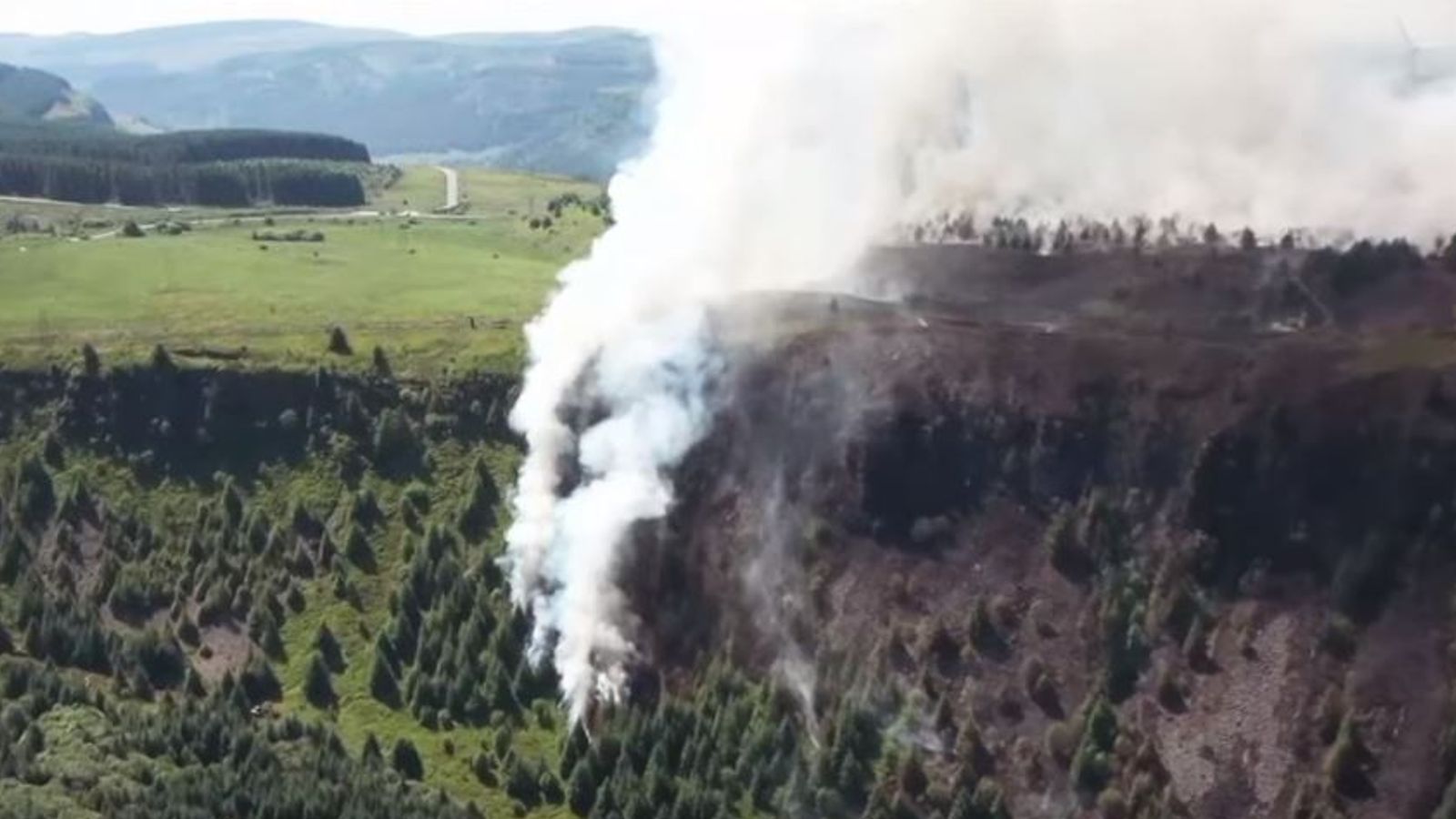The wildfire risk has been raised to ‘very high’ over much of England and parts of Wales.
The Met Office fire severity index shows the heatwave and lack of rain combining to create tinder-dry conditions.
And they are expected to last for the rest of the week.
An extreme wildfire warning already covers northeast Scotland as temperatures soar, with firefighters dispatched to tackle a blaze which broke out near Iverness on Saturday.
Please use Chrome browser for a more accessible video player
It is highly unusual for the risk to be rated so high, so early in the summer.
Normally, damp conditions produce lush vegetation for several weeks yet.
But the landscape is so dry this year that there is plenty of fuel for fires.
Canada set for worst year on record for its out-of-control wildfires
Massive wildfire in Scottish Highlands has burned nearly six square miles of land
Smoke from massive wildfire near Cannich in the Scottish Highlands visible from space
UK Wildfire Tactical Advisor, Craig Hope, said the risk had become “elevated” with climate change.
He said: “It is very early in the summer and last year when we had the fires in London, that was extreme, but that was a lot later in the year.
“How this year will build now is quite worrying.”
Sky News joined firefighters from around the country as they watched a specialist team from the South Wales Fire and Rescue Service tackle a blaze on Rhigos mountain near Abergavenny.
They had assembled for a training course on wildfires but were re-directed to watch a live fire.
The Rhigos fire started on Friday evening but repeated attempts to douse the flames have failed.
In a concerted effort to bring the fire under control the service used a helicopter to drop water on the flames and brought in excavators to create fire breaks.
We were taken along forestry tracks to an area of woodland ahead of the advancing fire.
There, the team set light to the grass and trees in a controlled burn to box in the main fire and stop it spreading through another spruce plantation towards a nearby wind farm.
Using fire to fight fire is a tactic common in Canada and California, but the South Wales Fire and Rescue Service is one of the few in the UK to use it.
Chris Deacon, watch manager for the service, said: “Because of the weather conditions, it doesn’t matter how much water we put on this fire, it will dry out and it will reignite.
“So, our only method here is controlled burning.”
Be the first to get Breaking News
Install the Sky News app for free
Read more:
Canada on course for worst wildfires on record
New York issues air quality alert – as US skies darkened by Canada wildfires
The Wennington wildfire in east London last summer stunned many experts because of its speed and intensity.
Almost 20 houses were destroyed by the huge grass fire on 19 July – the hottest day ever recorded in the UK when temperatures rose above 40C – which saw the London Fire Brigade deal with more than 1,000 incidents.
It was one of 24,316 wildfires in England between June and August 2022 – four times as many as in the same period of the previous year.
The Met Office and the UK Centre for Ecology and Hydrology have predicted that the number of wildfires will increase globally by 14% by 2030 and 30% by 2050.
Scientists warn climate change is making heatwaves and dry spells more prolonged, intense and frequent.
Click to subscribe to ClimateCast wherever you get your podcasts








